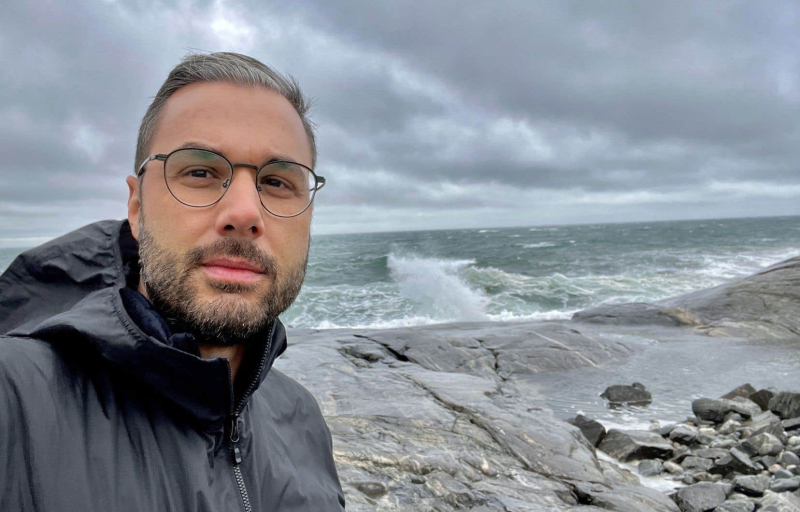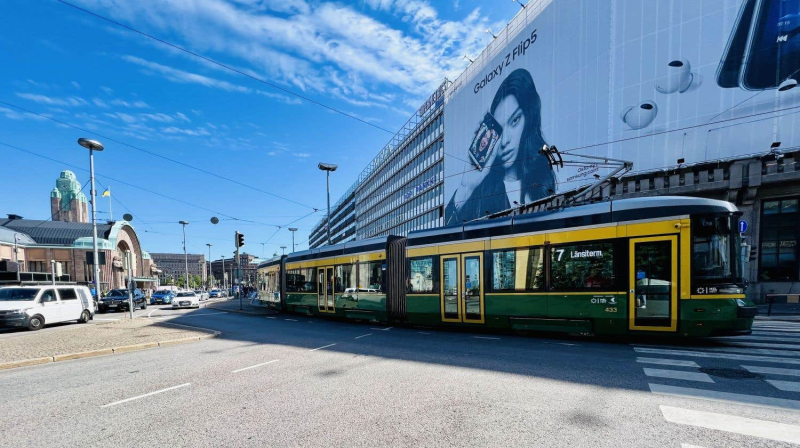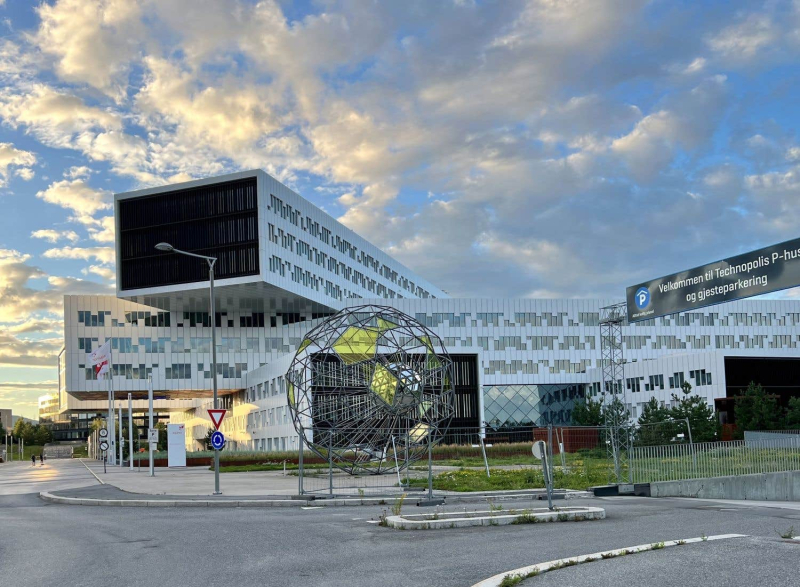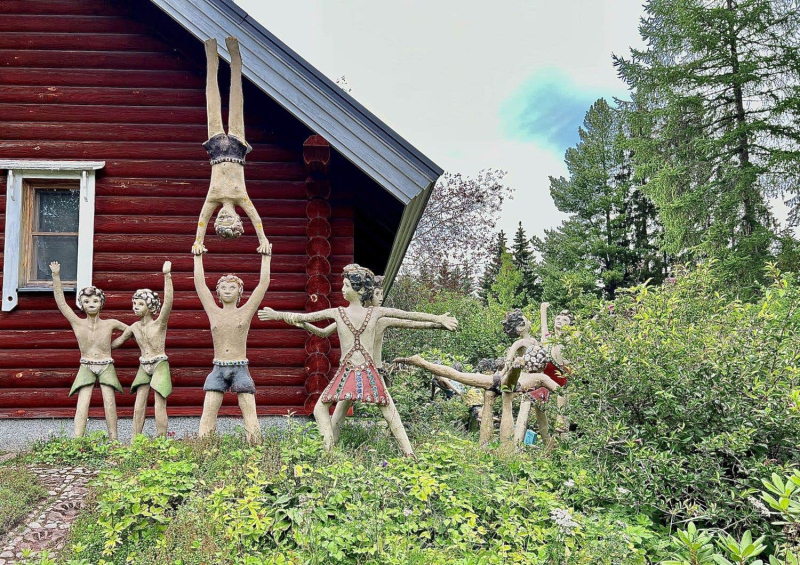
Marco Bélair-Cirino Le Devoir Marco Bélair-Cirino lors de son séjour en Europe du Nord
Comme le veut la tradition de fin d’année au Devoir, we take you behind the scenes of major reports. In August, Marco Bélair-Cirino traveled to Finland and Norway, where he took more notes than he needed.
The countries of Northern Europe are often taken as models by Quebecers, starting with politicians.
Over the past year, the mayor of Quebec, Bruno Marchand, and the Minister of Economy, Innovation and Energy, Pierre Fitzgibbon, went there on mission. They found ideas to reduce homelessness, increase energy efficiency or even put a tram line project on track.
The offer of active and collective transport in Helsinki, in Finland, and in Oslo, in Norway, is dizzying, I noticed. The apps on my phone offered me two or three different routes with varied metro-tram-bus combinations — which are increasingly electric, moreover — to get to an interview location: a public square to talk with a Russian exile, the headquarters of a ministry to speak with the head of Finnish diplomacy or the head office of an NGO to speak with a climate activist, for example. The former anti-tram conservative candidate in the Jean-Talon constituency, Jesse Robitaille, would not know where to turn if he got on his bike in Helsinki or Oslo.

Photo: Marco Bélair-Cirino Le Devoir The Helsinki tramway, one of the oldest in Europe, currently covers 52 kilometers of rails, soon more.
And Helsinki-Vantaa and Oslo-Gardermoen airports are each served by a train. The users of the Flytoget express with which I reached the city center of the Norwegian capital had nothing to envy of those of the 747 bus, except the cost of the journey. The 19-minute journey between the terminal and the center of Oslo — a period shorter than what it took me to reach the Société de transport de Montréal terminal and recharge my Opus card at my return to Quebec — hovers around 30 Canadian dollars.
The strong presence of electric vehicles in Norway – including on the shores of the Barents Sea, in the very north of the kingdom – struck me, like many others. The electric shift has a lot to do with “taxes” and restrictions of all kinds on gasoline and diesel vehicles, which have made buying electric vehicles more attractive, Espen told me at his home in outskirts of downtown Oslo. Got it, it wasn’t the tax revenues from Norwegian oil and gas exploitation that paid for the Tesla parked in his driveway!
Furthermore, taxes on polluting vehicles do not only have a political color. Indeed, they are the fruit of the different government coalitions that have succeeded one another over the last 35 years behind the controls of the State – thanks to the multi-member proportional voting system in one round.
You have guessed by now, during my reporting trip to Finland and Norway last summer, I dropped some ideas to glean others. Some of them may also appear very insignificant… such as that of letting passengers exit through both the front doors and the rear doors of planes, or even that of acquiring x-ray devices for hand luggage thanks to which there is no need to take your laptop out and put it in another bin.
Why not take inspiration from them, as Finland (more than 5.5 million people) and Norway (less than 5.5 million people) are models of democracy and happiness.
According to the UN's World Happiness Report, the two Nordic states are in the top 10 positions in the 2023 ranking of happiest countries in the world: Finland, ranked 1st; Norway, ranked 7th. “Things must be really bad elsewhere,” Matti joked to me at the end of an interview where I asked him about Finland's presence in the North Atlantic Treaty Organization and the absence of Norway in the European Union (although part of the Schengen area), among other things.
Finland and Norway have also built, in the shadow of Russia, democracies that are today among the most robust on the globe.
Democracies so strong that a political scientist told me he gave up watching the hit TV series Okkupert (Invaded) so much the premise — Russia invades Norway and restarts its oil and gas production with the acquiescence of the European Union and the indifference of the United States — was absurd in his eyes.
Those who, like me, have watched the three seasons of Okkupertdespite its improbabilities can find the office of Prime Minister Jesper Berg just outside Oslo, in Fornebu. It is in fact a confusing complex of the Equinor oil company made up of five blocks three floors high, 140 meters long and 23 meters wide stacked on top of each other.

Photo: Marco Bélair-Cirino Le Devoir The Equinor oil company complex near Oslo housed the offices of Prime Minister Jesper Berg in the TV series Invaded.
In the Russian Bear’s Backyard
If Russia sometimes lets itself be seen behind a curtain of birches or behind a river, it always makes itself heard, either through the successes of Russian pop singers or the hostile declarations of Russian officials pushed by the waves across the border of some 1500 kilometers on which I made a few jumps last summer.
Museums are scattered along it, recalling in particular the Winter War (1939-1940) and the Continuation War (1941-1944), during which Russia tore the region of Karelia from Finland . A page of history that several Finns — including several young people with whom I chatted — are still not ready to turn.
Longues-ramparts
Like Quebecers, Finns and Norwegians also persist in speaking a language different from the one that is popular on Facebook, Instagram, TikTok and others. As I saw it, the shopkeepers didn’t even attach “hi” to their greetings.
During my stay, Finns and Norwegians were in the shops, but also in the libraries. Moreover, the central libraries of Helsinki and Oslo amaze visitors, enough to make regulars of the Grande Bibliothèque Montréal — or at least me — a little, a lot jealous.
Mossy yogis
Finally, in reporting, there is what strikes us, but which we do not write, often due to lack of time or space. The Parikkala Sculpture Park had remained in my notebook until it appeared here…

Photo: Marco Bélair-Cirino Le Devoir Half a thousand concrete statues stand in the Parikkala Sculpture Park.
In Parikkala, a 3.5-hour drive northeast of Helsinki, no less than 560 concrete statues stand guard, including 250 adopting yoga postures and dozens of children playing among ferns, sea buckthorn and thistles. The artist Veijo Rönkkönen (1944-2010), who was born in Soviet-occupied territory, sculpted and placed them there from 1961 to 2010. He left behind a fascinating garden on the border of two worlds, on which I stumbled upon it (almost) by chance. A Norwegian proverb says: “Only he who wanders finds new paths.”

